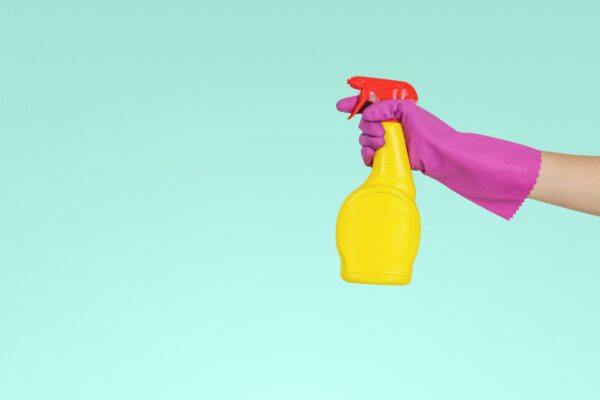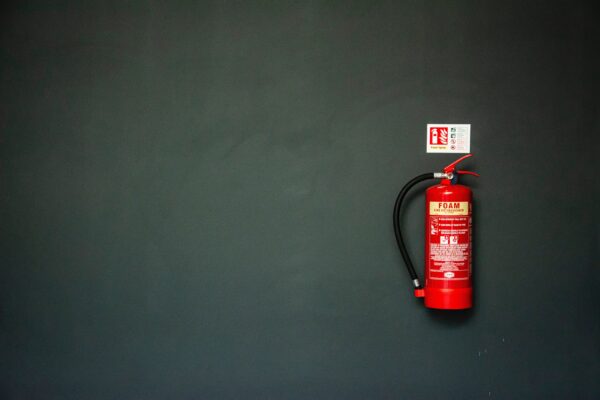Returning To The ‘New’ Normal
As COVID-19 restrictions begin to wind down and relax, facilities have a duty to begin planning for the inevitable return of occupants and ensure their health & safety is maintained. Emergency compliance meanwhile must also be upheld to ensure the safety of occupants during emergencies as they return to facilities.
In this article we discuss the 4 pillars which facilities are encouraged to plan for as occupants return to facilities:
{Source: https://www.safeworkaustralia.gov.au/}
Physical Distancing
When it comes to reducing the risk of COVID-19 being spread in the workplace and ensuring occupant safety as occupants and staff being to return to work, physical distancing is one of your key tools. The best way to approach physical distancing in your facility is by applying a risk management approach, similar to how you would approach any other workplace hazard.
Your facility will need to comply with physical distancing measures that have been issued by your state or territory. Each state and territory have very different requirements when it comes to how occupants returning to facilities must be positioned, which you can find here.
To determine the most effective way you can implement physical distancing in your facility, you will need to:
- Identify all activities or situations where people in your workplace may be near each other.
- Assess the level of risk that people in these activities or situations may contract and/or spread COVID-19 in your workplace, and
- Determine what control measures are reasonably practicable to implement based on the assessed level of risk.
When it comes to implementing control measures in your facility to ensure physical distancing is followed, there are several suggested measures that can be taken:
- Calculate the area of the enclosed space and divide by the number of square metres allowed/recommended per person by your state or territory. This will let you know the maximum number of people allowed in your facility at one time.
- Implement arrangements that allow occupants to minimise face-to-face interactions that are not 1.5 metres apart, including:
- Arranging furniture to facilitate physical distancing.
- Applying walking pathways which travel in one direction to avoid too many interactions with other occupants.
- Placing restrictions on seating that is too close together, leaving seating open which is separated enough.
- Encourage the use of teleconferencing, email or phone calls for client engagements and internal meetings.
- Reduce the number of attendants to in-person meetings to only those absolutely necessary to attend.
- Minimise the number of people within an area at any time, and limit access to certain areas of the facility.
- Stagger start, finish, and break times where appropriate.
- Ensuring occupants are all provided their own equipment required at the facility.
As important as the above examples are to ensuring physical distancing is followed by occupants, facilities must also ensure that adequate on-going reviews are followed to monitor the effectiveness of these strategies.
Hygiene
You must direct your occupants and visitors in your facility to practice good hygiene practices to ensure occupant safety as they return from lockdowns. What exactly constitutes good hygiene?
There are many required habits from occupants, including:
- Occupants washing and drying their hands, preferably with paper towels, before and after eating, after coughing or sneezing, after going to the toilet and when changing workstations.
- Occupants covering their coughs and sneezes with their elbow or clean tissue.
- Avoiding touching their eyes, face, nose, or mouth.
- Dispose of tissues and cigarette butts hygienically.
- Clean and disinfect shared equipment after use.
- Avoid physical contact with other occupants as much as possible.
To ensure that the above points can be met, it is imperative you plan ahead so your facility has the adequate and accessible facilities required to achieve good hygiene. These facilities must be in good working order, clean and otherwise safe.
These facilities include but are not limited to:
- Washroom facilities stocked with toilet paper, soap, and drying facilities.
- Change rooms.
- Dining facilities.
- Hand washing and drying stations.
- Alcohol-based hand sanitiser.
When deciding how many facilities you need, consider the number of occupants on site, the shift arrangement and when access to these facilities is required. Depending on this number, your arrangements may need to be flexible to support larger and smaller numbers of people.
Finally, it is likely your facility will require occupants and visitors to be properly vaccinated when entering your facility. It is imperative that your facility plans appropriately with the correct procedures to ensure you best meet these requirements.
Cleaning
Physically removing and disinfecting germs, bacteria, and viruses, dirt, and grime from surfaces in your facility is an absolute must in ensuring a safe return to facilities for occupants. In addition, continued cleaning must be planned for the facility regardless of the number of occupants which return to the facility.
Occupants should also be provided with suitable cleaning, and disinfecting equipment. Facilities need to ensure their staff are trained in using the provided equipment properly, to deal with any mishaps that may occur at the facility.
Any surfaces which are frequently touched should be prioritised for cleaning first. These surfaces likely include:
- Tabletops
- Counters
- Door handles
- Light switches
- Elevator buttons
- Desks
- Toilets
- Taps
- TV remotes
- Kitchen surfaces
- Phones
- EFTPOS machines
- Workplace amenities
Cleaning of the facility should ideally be completed at least once daily. Depending on the frequency at which occupants and visitors use your facility, this number may change.
Emergency Compliance
It can sometimes be common for facilities to forego their emergency compliance requirements whilst occupants are away from facilities. Despite this not being recommended, it can occur even in circumstances where it was not intended.
If this has occurred for your facility, it is imperative that your emergency compliance is once again made a priority as occupant safety begins becoming a primary concern. Old fire safety equipment will likely need maintenance, new ECO members will likely need to be appointed, and new emergency response procedures will require planning to account for the fluid number of occupants in the facility.
First 5 Minutes provides a comprehensive and structured service that guarantees your emergency compliance is met even during these unstructured times. We provide the training, resources, experts, and materials you need to help protect the safety of your occupants when emergencies occur.
We’ve also provided a comprehensive checklist down below, that you can download for free to assist with better planning for your occupants returning to your facility.



